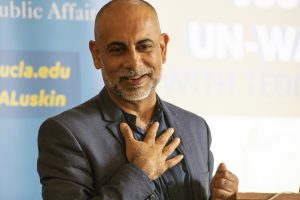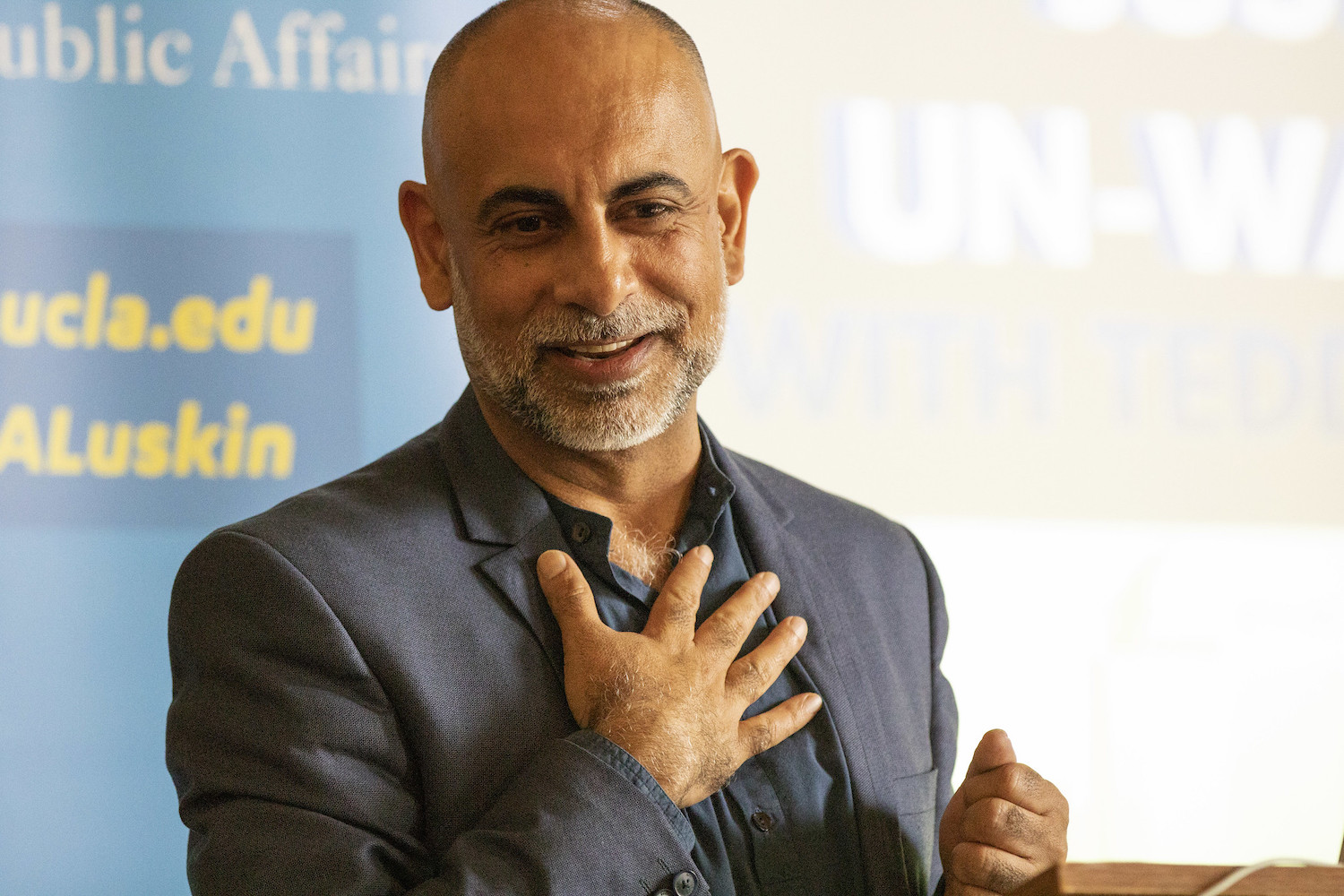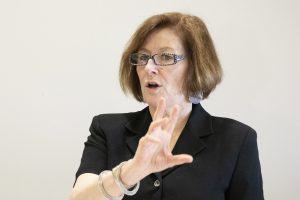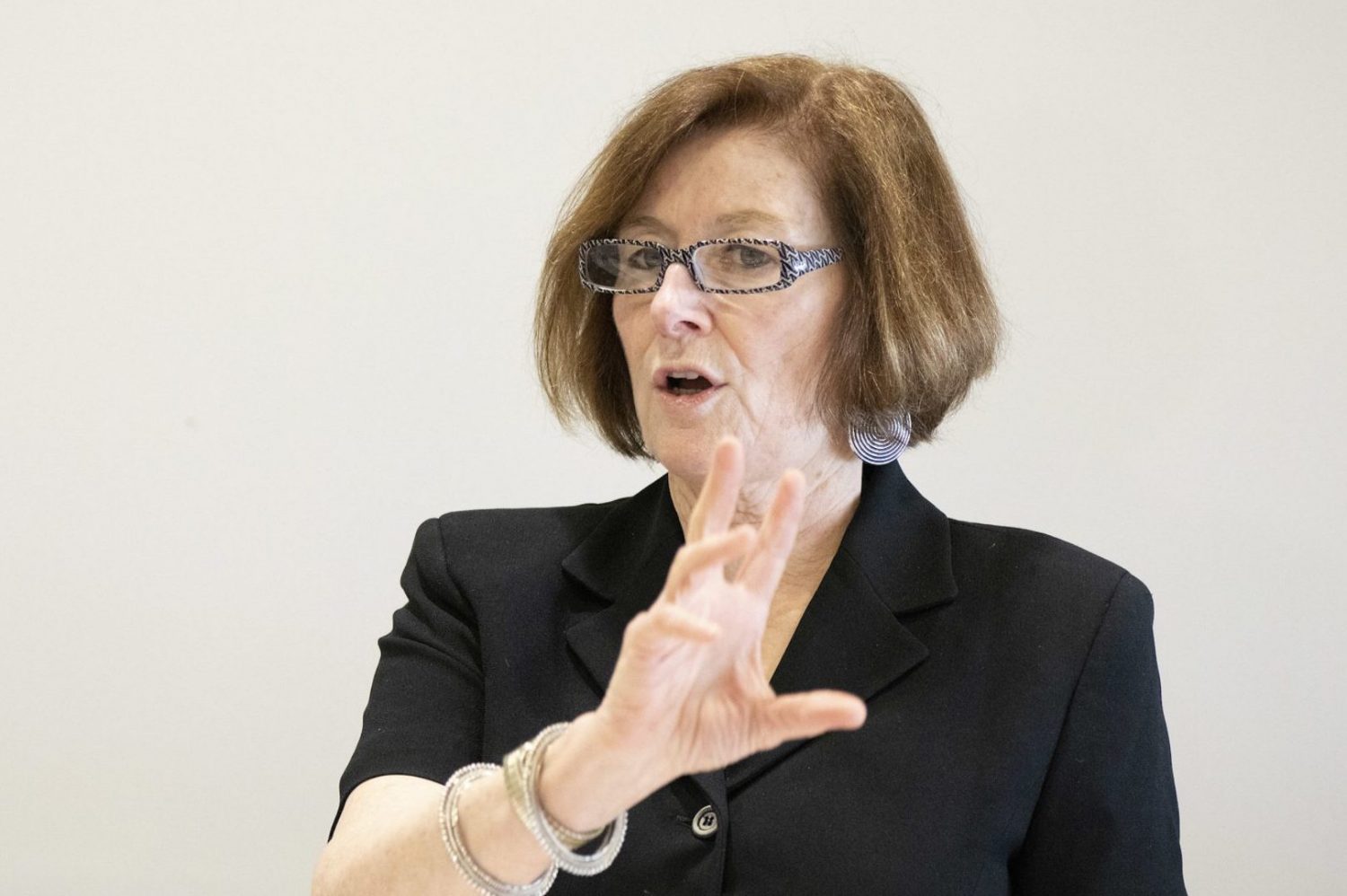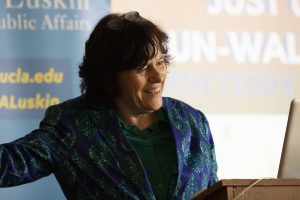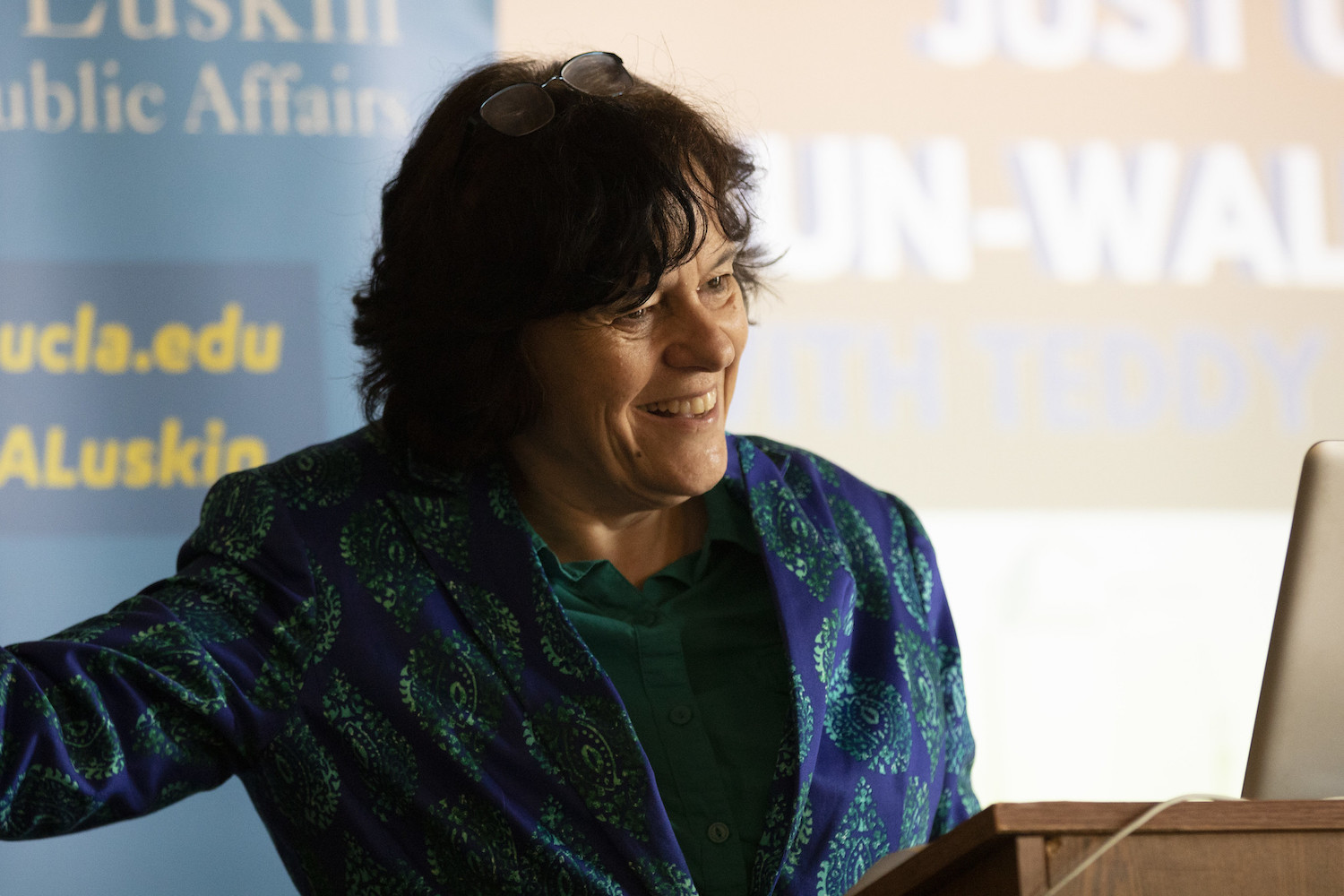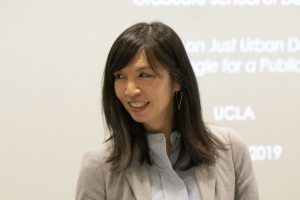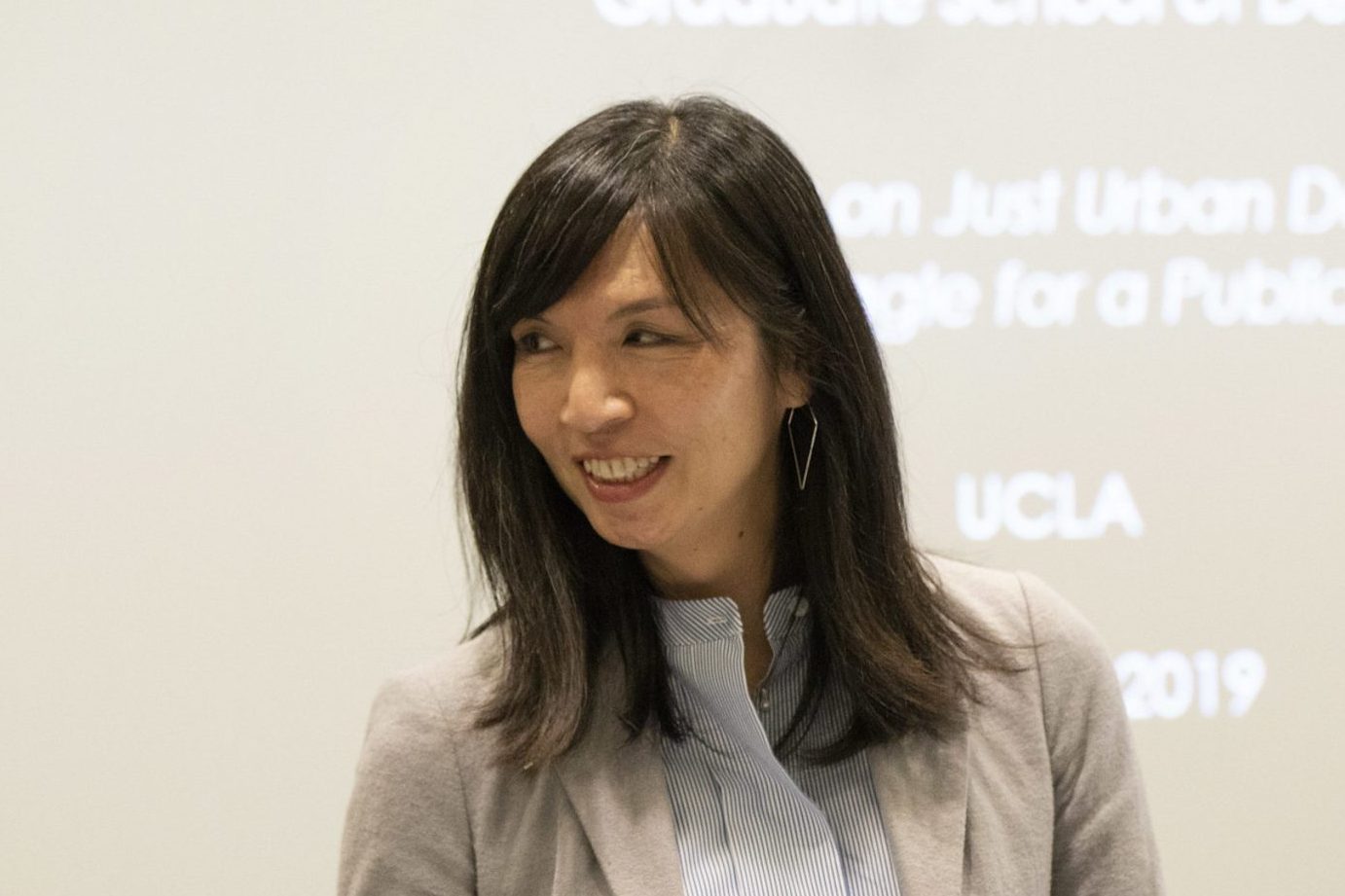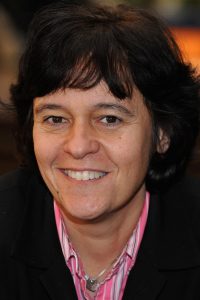By Mary Braswell
A deep exploration of social justice as a guiding principle behind urban design will evolve into a book conceived by the UCLA Luskin faculty.
Over spring quarter, Urban Planning brought 10 prominent scholars to campus to shed light on public space in all its complexity. They spoke about the market forces, political calculations, environmental concerns and lifestyle trends that are transforming cities in Southern California and around the world, pushing some citizens to the fringe. And they offered frameworks for putting inclusion back at the center of urban design.
The speakers’ insights will become chapters in a book that shares the same name as the lecture series: “Just Urban Design: The Struggle for a Public City.”
“Cities are very much theaters of inequality, an inequality that has been increasing in the last decade,” said Urban Planning Professor Anastasia Loukaitou-Sideris, who organized the project with Chair Vinit Mukhija and Assistant Professor Kian Goh.
“The larger question that motivates this series is whether there is anything we can do through physical planning and urban design to create more just cities.”
The speakers who came to UCLA as part of the Harvey S. Perloff Lecture Series and Meyer and Renee Luskin Lecture Series brought decades of experience both in scholarly settings and on the front lines of urban upheaval.
They included Setha Low, described by Loukaitou-Sideris as “one of the most prominent anthropologists and ethnographers of our time.” A professor at City University of New York’s Graduate Center, Low has worked with U.N. Habitat and other institutions to develop global social justice indicators for urban design.
“This is a really important moment in time,” Low said during her April 23 visit to UCLA. “There is a push to create a society, at a moment of great divisiveness, that is much more open and accessible and let’s say free. We need places to come together.”
She said one of her greatest challenges is communicating these ideals to the general public.
“We need to really explain how public space creates flourishing societies,” she said. “We need to really reach outside of ourselves and reach a much broader public so that they understand why it matters.”
The April 25 lecture by Harvard Professor Diane E. Davis was moderated by Goh, who noted, “The things that I learned from her, mostly to do with politics and scale, really informed the work that I do now.”
Davis, who earned her Ph.D. in sociology at UCLA and now serves as the chair of urban planning and design at Harvard’s Graduate School of Design, raised foundational questions such as “What makes a city public?” and “What gives a city a robust democratic public sphere?”
“I’m really interested in the politics of how people and states interact or don’t interact with each other,” she said. “I think that is a really important framing for thinking about the best urban design.”
The notion that public space transcends national boundaries guided a May 1 talk by Teddy Cruz and Fonna Forman, professors at UC San Diego and partners in a studio specializing in urbanism, architecture and political science.
“We believe that the convergence of geopolitical borders, climate justice and poverty is ultimately the challenge of our time,” said Cruz, explaining a project the two had created for the U.S. Pavilion at this year’s Venice Architecture Biennale. Called “MEXUS: A Geography of Interdependence,” the presentation cast the border region as a shared space interwoven with environmental, economic and cultural connections.
Forman sounded an alarm about the “nativist mentality” that is moving into the mainstream, “legitimizing open racism that we haven’t seen since the middle of the 20th Century.”
“We see the San Diego-Tijuana border region as a microcosm of all of the injustices that neoliberal globalization has inflicted on the world’s most vulnerable people: poverty, climate change, accelerated migration, gender violence, human trafficking, slow suburbanization, privatization and so on,” she said.
Forman said that she and Cruz want to tell a very different story about life on the border.
“Our work reimagines the U.S.-Mexico border as a tissue of social and spatial ecologies, an amazing laboratory for political, urban and architectural creativity. For us, conflict is a creative tool.”
These other speakers also contributed to the series: Rachel Berney and Jeff Hou of the University of Washington, Alison Hirsch of USC, Kimberley Kinder of the University of Michigan, Matt Miller of the University of Pennsylvania and Michael Rios of UC Davis.
Loukaitou-Sideris, Mukhija and Goh will join the “Just Urban Design” lecturers in contributing chapters to the planned book, which has sparked interest from several publishers.
Collecting the insights of guest speakers in a single book is a model that UCLA Luskin Urban Planning has successfully used before. In 2014, Loukaitou-Sideris and Mukhija invited lecturers to contribute essays examining urban activities such as street vending, garage sales and unpermitted housing to create the book “The Informal American City: Beyond Taco Trucks and Day Labor,” published by MIT Press.
Stan Paul contributed to this article.
On Flickr:
View photos from the UCLA Luskin Lecture by Setha Low.
View photos from the Harvey S. Perloff Lecture by Diane E. Davis.
View photos from the UCLA Luskin Lecture by Teddy Cruz and Fonna Forman.


